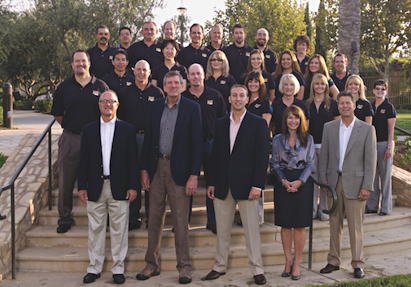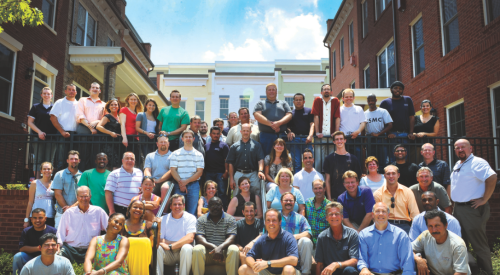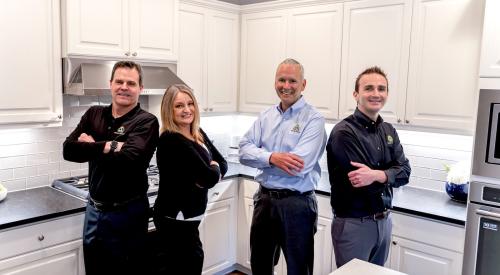The home-building business tends to be dominated by owner-operators. The types of people that launch businesses typically take charge of that business and only reluctantly does that original entrepreneur hand over the reins to someone else. Other owner-operators, who do reach a point where they would like to move on, find out too late that they have not laid adequate plans to transition the business to new owners. Many obstacles block their path to retirement and they keep working. Chief among those obstacles are a lack of repeatable systems and processes, without which, a new owner from outside the company is reluctant to buy into the business. Another obstacle: capable internal leaders have not been properly identified and groomed for leadership.
As a past winner of a National Housing Quality Bronze Award, Wathen Castanos Hybrid Homes Inc. has successfully navigated major transitions in the past. When the housing market came to a particularly precipitous crash in their home region — California’s Central Valley — company leaders pivoted to position the firm as a leader in green and sustainable homes. They even borrowed the term “hybrid” from the automotive industry so there would be no confusion about the kind of homes they build. At the same time, the company implemented an admirable system of total quality management that helped improve the company’s levels of customer satisfaction and its ability to navigate treacherous local economic conditions. A different and perhaps more difficult transition in owner-management power sharing is ultimately what helped the firm garner a second National Housing Quality Award, this time a Silver Award, explains company president, Mike Nimon.
“The owners of this company (Kevin Castanos and Richard Wathen), along with the management team, devised a business plan that would allow the operators of the business — the directors, managers, and executives of the company to operate the company while the owners provided review,” Nimon explains. “They are an executive board with oversight and are engaged in the team as needed based on their resources and some of their past expertise and yet not directly in touch with the company.”
Wathen Castanos Hybrid Homes
Fresno/Clovis, Calif.
Established: 1985
No. of homes built in 2010: 194
Markets served: 1
Notable benchmarks:
• Work Improvement Groups — Specific team “chartering” that uses DMAIC (define, measure, analyze, improve, and control) methodology to empower employees’ leadership toward solutions.
• Extensive home buyer touch points — Builder-to-buyer communication by sales, construction, design, lender, and Customer Care at planned experience points.
• Process mapping — Strategic team process mapping that identified more than 20 areas of team improvements centered around our mission.
• Third-party verification — Confirmation of quality results verified to an industry, third-party standard (e.g., Builders Challenge, Energy Star).
• Strategic goal setting — Monthly, quarterly, and yearly goals tracked by a dashboard matrix to measure success.
• Weekly staff success recognition — All staff have annual goals that are defined in weekly practice objective sessions and recognized by the president in success updates.
The 2011-2012 National Housing Quality Awards were underwritten by:
This transition laid the groundwork for the implementation of a new business plan — one that is reviewed weekly against goals — with stated objectives two and three years out. Implemented only a year ago, the business plan is the centerpiece of the conversation between owners and managers when they meet each week. It has also helped create a sense of long-term vision that has enabled a talented stable of managers and employees feel secure in the direction of the firm. For example, goals for 2012 require that the firm build six new model complexes this fall in order to get ready for the post-Super Bowl, spring selling season.
According to Laura Mather, VP of marketing and communications for the company, the new structure has brought clarity and a sense of direction that allowed team members to focus on the long term.
“With Kevin and Rich wanting to take a different direction at this point in their careers, there was a lot of concern among our people. What was going to happen? What are we going to do as a company because of the economic environment that we are in as a company? Are we going to continue to buy land?” says Mather. “The business plan brings clarity, because it is shared with all of our employees. They can see that we are purchasing land and that we’ve got six projects in the pipeline, and that brings a sense of job security and clarity. It is a long-term plan versus a month-to-month or every six months approach. Our plan goes out two to three years.”
With owners and managers working together in new ways and working from the same playbook, the company has been freed up to focus on improvement in key areas. Among its goals: increasing to 30 percent the number of clients who fall into the company’s highest level of customer satisfaction — “Evangelical” buyers. These are buyers who give the company perfect scores in 12 key areas of satisfaction. By January of 2011, the company had already exceeded its goal. It posted a level of 39 percent of evangelical buyers and the number climbed steadily higher as the months went by. In August, the figure approached 60 percent of buyers at the evangelical level.
Nimon, Mather, and other members of the management team — including Lorie Walker, director of customer service; Peter Castanos, director of sales; Josh Peterson, CFO; and Freddie Logue, director of construction — all emphasized the importance of having a fact-based company culture, one that discourages the “construction versus sales” and “us versus them” types of scenarios. Work Improvement Groups, or WIGs, have been an important factor in creating the flatter organization that avoids internal gamesmanship. Led by employees, WIGs tackled seven key company initiatives in 2010. Almost every member of the company’s 28-member team participates in a WIG. For 2011, WIGs focused on creating a Quality Process Procedural Manual, a Hot Spot Improvement Process, and an Employee Growth and Goals Initiative, among others.
This kind of team work, says Lorie Walker, has improved the customer’s experience as they go through the sales and building process. They don’t feel as if they are being shifted from one department to another, creating a more seamless experience. As a result, the company has increased its referral rate dramatically from 22 percent in 2009 to 33 percent in 2010, with further gains expected this year. In 2011, the company will increase its number of closings to in excess of 210, up from 194, all while holding the line on its number of full-time employees.
“Our new business plan has allowed our people to feel secure in their roles and therefore be more productive in them,” says Nimon. “This year we have actually begun using words that have not been in our vocabulary for awhile — words like ‘hire’ and ‘profit’ and ‘sharing’ and ‘bonuses’ that tie to specific objectives or a company. These gains have come out of this business plan and have reinforced that the plan is working.”














